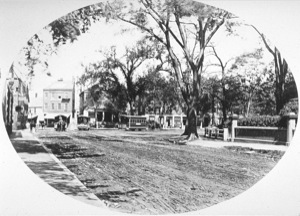
A few months ago, I wrote this paragraph as a part of a report:
When considering the future of [a college], it is important to remember that just as cities have ebbed and flowed around institutions over the years, so too will the nature and idea of campus, learning, and classrooms ebb and flow. We have experienced a dramatic expansion of our institutes of higher learning in this country for the last 50 years, or longer. The question is, how sustainable is that growth? Weaving campus into the fabric of what surrounds it will not only allow [a college] to gracefully expand, but it will allow it to gracefully contract with maximum flexibility and minimum impact on the neighborhood, should that be needed.
I was shocked to learn during research for that paper that the largest employers in many American cities are universities and hospitals, or “eds and meds,” for short.
I am concerned that we have cities banking on the continued growth of the university industrial complex, just when there seems to be mounting evidence that the cost-to-benefit ratio of many degree programs does not making much sense these days. In other words, salary inflation has not kept pace with tuition inflation. On top of that, there is the Internet, a disruptive technology when it comes to information dissemination and learning. For instance, my kids take their Chinese lessons with a tutor…in Beijing, via Skype. It’s pretty hard not to believe that the times are going to be a’changing for degree programs soon.
Given my lack of faith in the continued rocket-like growth of American universities, I was interested to read this article from the Economist, which drew on the example of Detroit in its heyday to sound a cautionary note for our institutions of higher learning: Declining by degree.
One of the more interesting tidbits from the article were these numbers:
College fees have for decades risen faster than Americans’ ability to pay them. Median household income has grown by a factor of 6.5 in the past 40 years, but the cost of attending a state college has increased by a factor of 15 for in-state students and 24 for out-of-state students. The cost of attending a private college has increased by a factor of more than 13 (a year in the Ivy League will set you back $38,000, excluding bed and board). Academic inflation makes medical inflation look modest by comparison.
(The photo above is Harvard Square, Cambridge, Massachusetts in 1869)